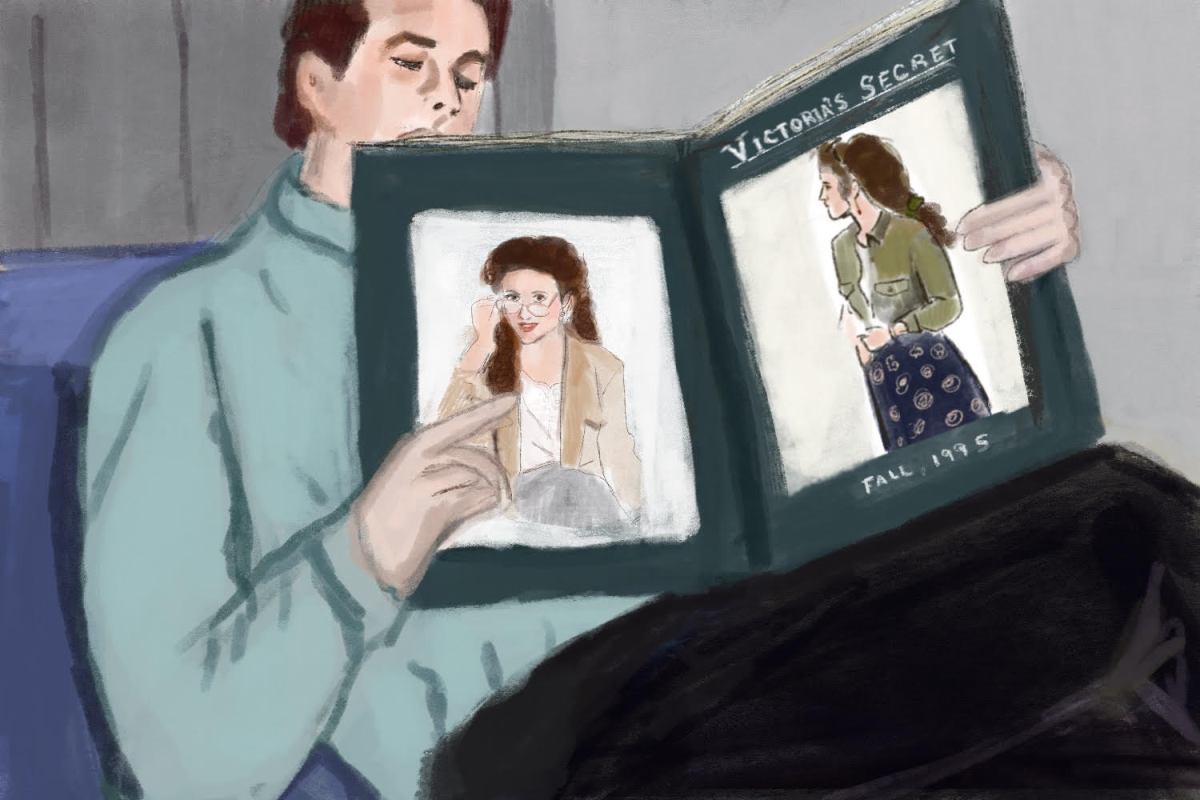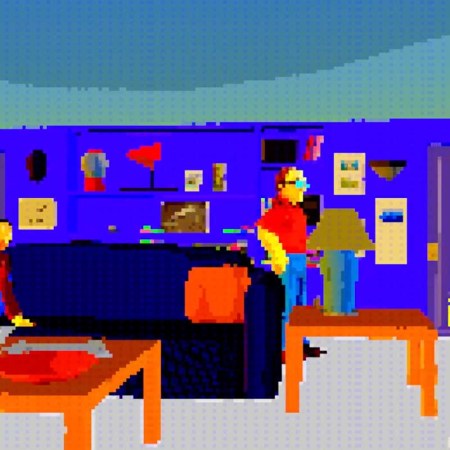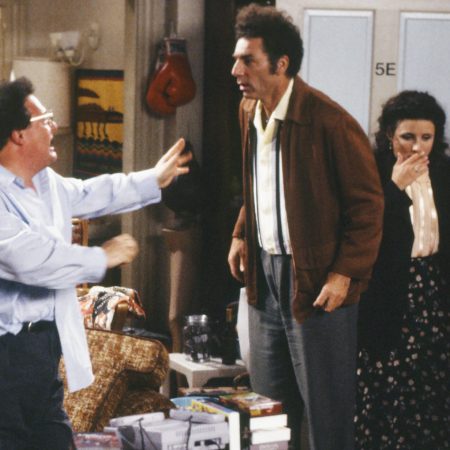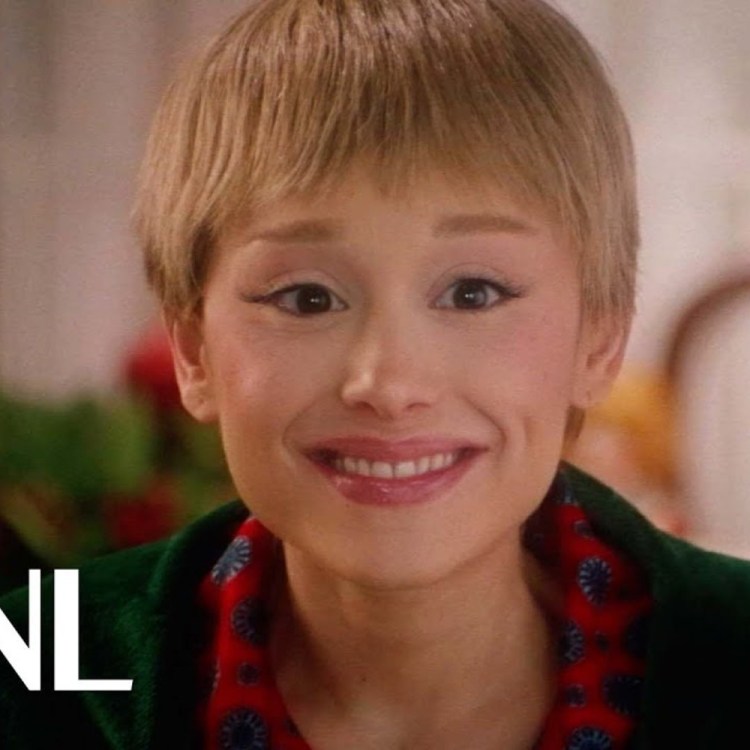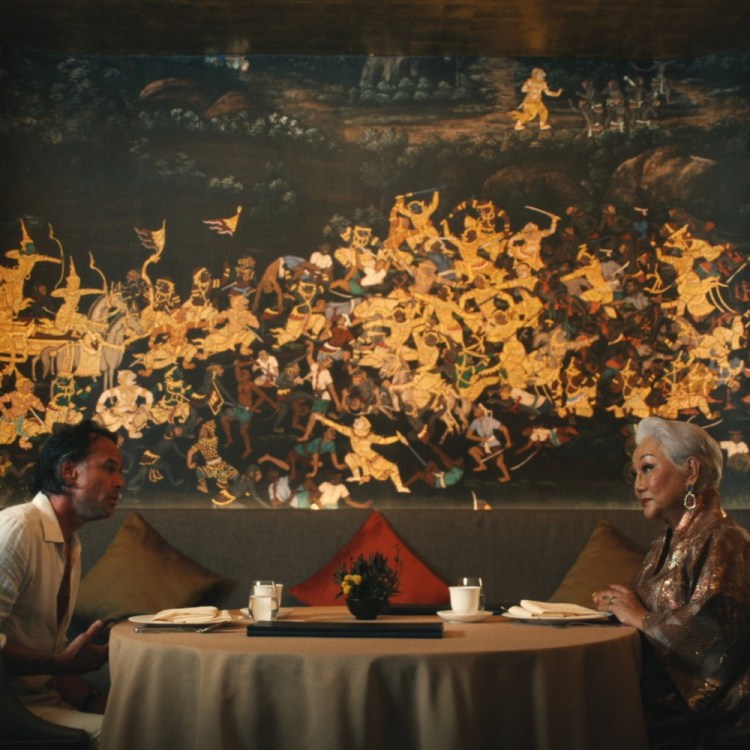Thirty years ago this month, a sitcom about a quartet of New Yorkers made its debut on NBC. The “show about nothing” went on to become one of the most iconic television shows of all time. To celebrate three decades of George, Elaine, Kramer and Jerry, InsideHook will be sharing stories about the show’s lasting impression on fashion, comedy and American culture all week. To kick things off, we looked at the past, present and future of the real-life catalog that Julia Louis-Dreyfus’s character worked for, J. Peterman. Today, a look at how the show’s style may have influenced the catalog that everybody secretly loved getting in the mail in the ’90s.
In case you haven’t heard, ‘90s fashion, in all its permutations — from grungy to minimalist to candy colored — is back. Fashion inspiration can come from unlikely places, and in recent years, Seinfeld’s Elaine Benes, better known for her expertly delivered bon mots than her wardrobe, has emerged as a style icon. Elaine’s long dresses, blazers and sensible shoes have been sealed into a generation’s consciousness thanks to countless reruns and Julia Louis-Dreyfus’s enduring appeal. The Elaine look doesn’t call too much attention to itself, and isn’t outwardly sexy. It’s easy and practical, and feels both slouchy and polished. Still, Elaine’s style influence has been the subject of a New York Times article and even an online Vogue photo shoot (featuring Hermes loafers that likely would’ve been way out of the character’s budget). And, maybe most surprising when looking back at ‘90s fashions, contemporary traces of Elaine’s look can be found in a surprising source: Victoria’s Secret catalogs.
Often reduced to a punchline for their glaring T&A, Victoria’s Secret catalogs should be better remembered for their fashions. The glossy, which ceased publication in 2016, is now one of countless relics of the print-media era, and past issues — scans of which can be sporadically found online — are perfect time capsules to bygone trends.
Founded in the late ‘70s by Roy and Gaye Raymond, the Victoria’s Secret catalog was originally a somewhat classier competitor to Frederick’s of Hollywood, and featured an array of ruffled nightgowns and marabou mules. By the 1990s, the catalog began to offer clothing meant to be worn outside of the bedroom, with an aesthetic described by Racked as having “more in common with L.L.Bean than Frederick’s of Hollywood.” The pages were populated with supermodels like Frederique van der Wal and Stephanie Seymour, and for the most part, the fashions they showcased weren’t all that revealing, presented in a self-consciously “classy” light, with elegant looking dark-paneled rooms a frequent setting. The clothes might look a little dowdy — there are long dresses and skirts, boxy blazers and nightgowns that feel more 1890s than 1990s — but at the same time they feel rooted in the larger fashion world of the decade, one which is due to make a comeback.
In recent years, in a phenomenon written about in The Times and Refinery29, among other publications, designers have brought back long, purposefully demure dresses, and many women have embraced the look, finding within it a kind of subversion of fashion norms around what does and doesn’t connote sexiness. Elaine is an icon of this stealthily stylish modesty and the ‘90s style she embodies seems like a femme branch of normcore (a look for which Jerry Seinfeld, in his light denim and chunky sneakers, is the patron saint).
To millennial eyes, the Victoria’s Secret models, in outfits meant for comfortable lounging or business casual affairs, seem to belong to a similar fashion moment. Consider an image of Frederique van der Wal posing in setting dubbed “Café Retro” in a 1995 catalog. Her long brown floral dress looks straight out of Elaine’s closet; the only difference between this ensemble and one Elaine would wear is the amount of buttons left sultrily undone. Elaine loves a shoulder-padded tan blazer, an essential in the closet of most every professional woman of the ’90s. A very similar blazer is worn by model Suzanne Lanza, who poses with a tilt of the head that says, “Hey, I’m businesslike and stylish.” This fashion is sturdy and sensible, and in a world in which the supposed stability of office jobs is being eroded, there’s something oddly comforting about it.
For all the talk around Victoria’s Secret’s PG-13 branding, these outfits, like Elaine’s, are demure. These are dependable clothes, neither too fancy nor too casual, without the garish trappings of women’s workwear of the previous decade. The at-home apparel in these catalogs is similarly reminiscent of Elaine. Elaine, every bit the smart and sarcastic modern woman, isn’t objectified through her fashion (when she is, it’s part of a bigger joke, as in her mortifying nip-slip holiday card) and her loungewear consists of long, white, old-fashioned nightgowns — a look found throughout Victoria’s Secret catalogs of the day, proving that coziness can often be more appealing than outright sexiness.
Maybe the connections between Seinfeld and Victoria’s Secret are purely coincidental, and to say one directly influenced the other might be a stretch (though model Karen Mulder did, in fact, wear a dead ringer for Jerry’s infamous Puffy Shirt in 1992). But both these essential pieces of ’90s pop culture capture a particular fashion moment now filled with nostalgic appeal. Whether it’s worn by a supermodel or a comedic icon, a long floral dress or a frumpy nightgown can look pretty darn good. These looks, with their perfectly low-key charms, may not be the first thing you think of when the Victoria’s Secret catalog comes to mind, but they deserve their place in the fashion pantheon, right alongside Elaine’s loafers and calf-length skirts.
This article appeared in an InsideHook newsletter. Sign up for free to get more on travel, wellness, style, drinking, and culture.
